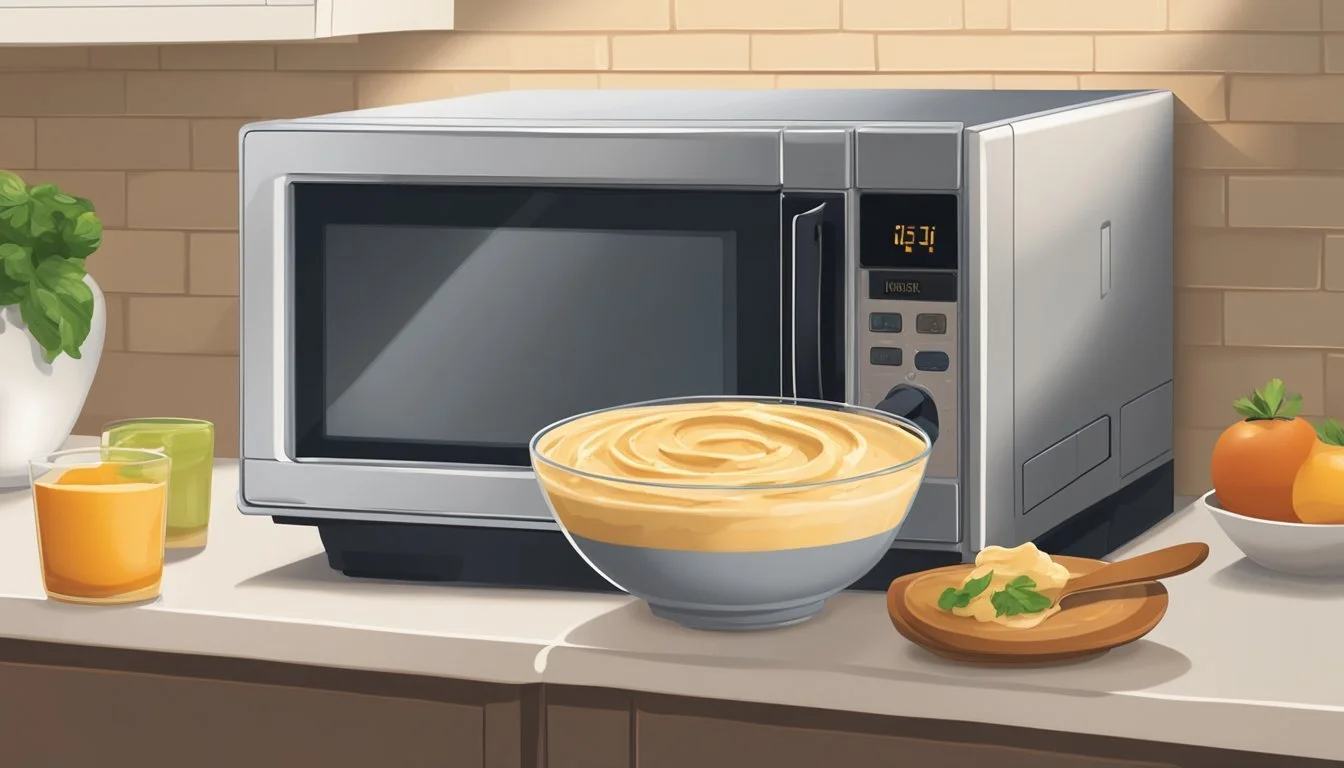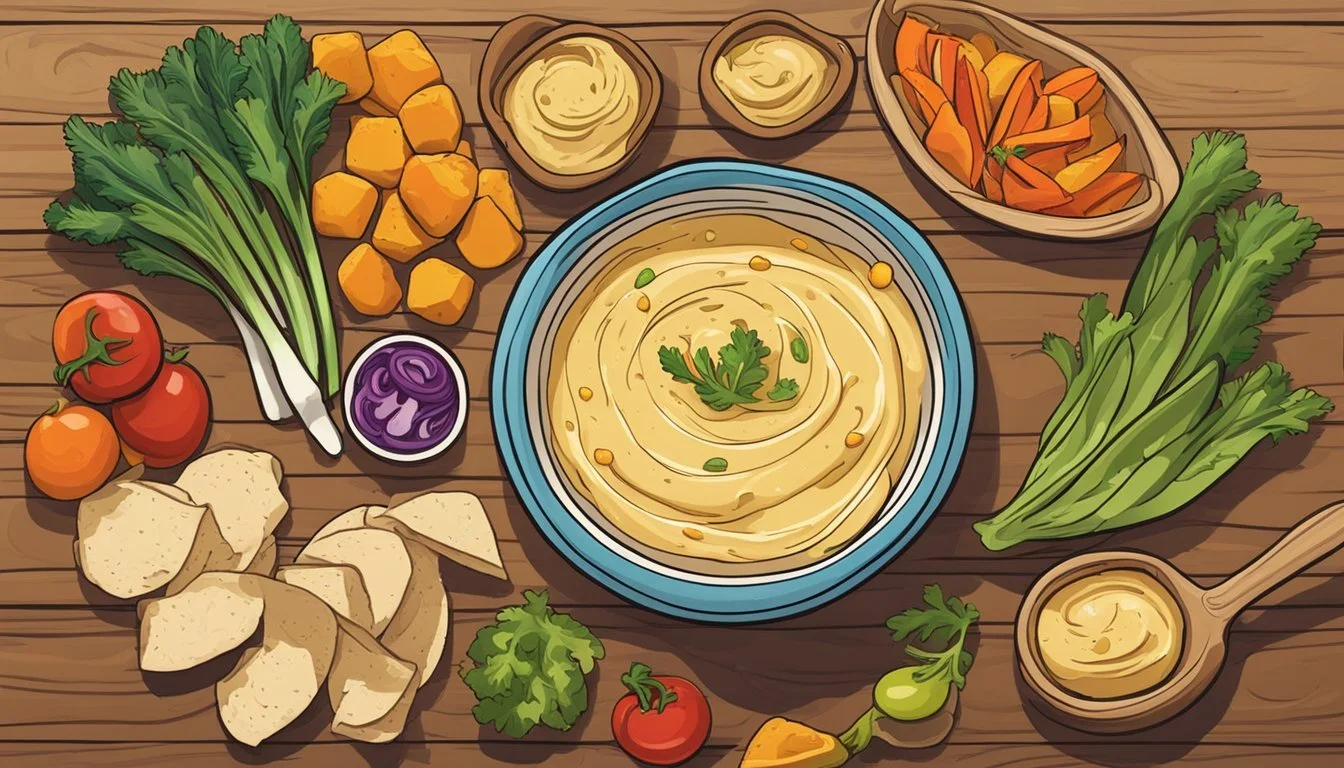Best Way to Reheat Hummus
Tips for Preserving Its Creaminess and Flavor
When it comes to enjoying hummus, the creamy texture and tangy flavor are essential to the experience. Lovers of this chickpea-based spread know that serving it at the right temperature can significantly enhance its taste and mouthfeel. As hummus cools, it often becomes too thick and loses the smoothness that makes it so delightful. Reheating hummus, therefore, is not just about warming it up; it's about reviving the dip’s appealing consistency and zest without compromising its delicate characteristics.
Reheating hummus requires gentle and controlled heat to prevent it from losing moisture and to ensure the flavors remain bold and the texture stays creamy. It’s important to approach the reheating process with care, as too much heat can lead to separation of the ingredients and an undesirable pasty result. Keeping the heat moderate and incorporating techniques that evenly distribute warmth can help maintain the quality of the hummus. Whether using a water bath, steaming, or carefully microwaving, each method has its merits and can be selected based on convenience and preference.
Understanding Hummus
Hummus, a Mediterranean dip cherished for its creamy texture and tangy flavor, is primarily made from chickpeas and tahini. It not only pleases the palate but is also lauded for its health benefits.
Ingredients Key to Hummus Flavor
The quintessential hummus recipe involves a blend of key ingredients, each contributing to the overall taste and texture of the spread.
Chickpeas: The foundation of hummus, also known as garbanzo beans, provides the distinct texture and is a healthy source of protein and fiber.
Tahini: A paste made from toasted ground sesame seeds that imparts a nutty flavor and contributes to the creaminess.
Lemon Juice: Adds a necessary tanginess that brightens the overall flavor profile.
Garlic: Offers a sharp, aromatic punch that complements the other flavors.
Olive Oil: Enhances the smooth texture while adding a rich, fruity note.
Spices: Commonly used spices such as ground cumin, salt, and paprika can be adjusted to taste, providing a warm and earthy backdrop.
Homemade hummus often surpasses store-bought versions in both texture and taste due to the freshness of ingredients and the absence of preservatives.
Hummus Variations
Hummus can be tailored with an array of additional flavors and ingredients that transform its taste and presentation. Some popular variations include:
Roasted Red Peppers: Blended into the hummus, roasted red peppers lend a smoky undertone and a vibrant color.
Sun-Dried Tomatoes: Can be mixed in to add a chewy texture and a concentrated burst of tomato flavor.
Pesto: Incorporating pesto introduces a herby freshness and can make the hummus more savory.
These are just a few examples; the robust base of traditional hummus is highly adaptable to personal preferences and innovation, embodying its universal appeal. Whether utilizing canned chickpeas for convenience or preparing chickpeas from scratch, the key to exceptional hummus is in the proportion and quality of ingredients, ensuring a balance between creaminess and zest.
Preparation Before Reheating
Proper preparation is essential in maintaining the creamy texture and tangy flavor of hummus during the reheating process. Paying attention to consistency and temperature transition before applying heat ensures the best results.
Consistency Adjustments
Before reheating hummus, one may need to adjust its consistency. Since cold storage can cause hummus to thicken, adding a small amount of liquid can help restore its creaminess. Depending on preference, one can add:
1-2 teaspoons of water: Water is the simplest adjustment for consistency and doesn't alter flavor.
A drizzle of olive oil: Olive oil enhances richness, contributing to a creamier texture.
It is crucial to stir these additions into the hummus properly to achieve a homogeneous mixture.
Temperature Transition
To prevent the hummus from heating unevenly or becoming too runny, a gradual temperature transition is advisable. Steps for an effective temperature transition include:
Remove from the refrigerator: Allow the hummus to sit at room temperature for about 15 to 20 minutes. A sudden shift from the cold can affect its texture.
Use a freezer-safe container: If the hummus was stored in a freezer, ensure it's thawed in the refrigerator first, ideally overnight, in a container that prevents freezer burn.
By carefully adjusting the hummus consistency and transitioning its temperature, one sets the stage for a successful reheating that maintains its desired qualities.
Reheating Techniques
When reheating hummus, one's goal is to preserve its creamy texture and tangy flavor. Several methods can be employed, each with its own steps and precautions.
Stovetop Method
To reheat hummus on the stove, one needs only a saucepan and a source of gentle heat. It's recommended to add a small amount of water or vegetable broth to the hummus in the saucepan. This liquid creates steam, which evenly warms the hummus without scorching it. Stir the hummus consistently over low heat until it reaches a lukewarm temperature.
Oven Approach
For the oven approach, preheat the oven to a moderate temperature, usually around 350°F (175°C). Place the hummus in an oven-safe dish, adding a small amount of water to prevent drying. The addition of a sprinkle of baking soda can help maintain the consistency of the hummus. Cover the dish with aluminum foil and heat it until the hummus is hot, which typically takes about 10-15 minutes.
Microwave Strategy
The microwave method is quick and efficient. Place the hummus in a microwave-safe dish and cover it with a wet paper towel to keep the moisture intact. Heat in short intervals of 30 seconds, stirring in between, until the hummus is uniformly warm. Be careful not to overheat, as microwaves can vary in power and may cause the hummus to dry out or become too hot.
Alternative Methods
Other methods may be more suited to those seeking indirect heating techniques. For instance, one could employ a hot water bath by placing the hummus in a sealed bag and immersing it in hot water for a few minutes. Another trick is the ice cube method—stirring in a small ice cube while reheating on the stove helps to add moisture back into the hummus and retain its creamy texture.
Garnishes and Additions After Reheating
Once your hummus is reheated, adding the right garnishes can elevate its flavor and visual appeal. Quality oils and fresh additions can make a significant difference.
Enhancing Flavor with Oils and Spices
Drizzling high-quality olive oil over hummus not only adds rich flavor but also contributes to a creamier texture. For a smoky twist, one can sprinkle a pinch of paprika or crack some pepper over the top, adding both color and depth to the dish.
Oils:
Extra-virgin olive oil: Rich and fruity
Toasted sesame oil: A small drizzle for an Asian twist
Spices:
Paprika (smoked or sweet): A vibrant dusting for warmth
Freshly ground black pepper: A classic pairing for a spicy kick
Adding Freshness with Herbs and Citrus
Garnishing with fresh herbs introduces a vibrant contrast to the warm, earthy flavors of hummus. Finely chopped parsley or cilantro can bring a bright freshness, while a squeeze of lemon juice adds a tangy zestiness that complements the creamy base.
Herbs:
Parsley: Chopped for a fresh, clean flavor
Cilantro: Minced for a light, lemony note
Citrus:
Lemon zest: Grated for aromatic citrus oils
Lemon juice: Freshly squeezed for a bright acidity
Storing Reheated Hummus
After enjoying warm hummus, it's crucial to store leftovers properly to maintain its creamy texture and prevent dryness. Correct storage ensures the hummus remains as delicious as when first reheated.
Best Practices for Preservation
One should place any uneaten reheated hummus in a freezer-safe container to preserve its texture and flavor. When preparing to store in the refrigerator, users are advised to:
Ensure the container is airtight.
Consume refrigerated hummus ideally within three days for optimal freshness.
For those choosing to freeze their hummus, the following procedure is recommended:
Place the hummus in a freezer-safe container or a heavy-duty freezer bag.
Label the container with the date of freezing.
Frozen hummus can last up to six months, though it's best enjoyed within one month to maintain its creamy consistency.
Techniques to Prevent Dryness
To prevent the hummus from drying out during storage, a few simple techniques can be applied:
Prior to sealing the container, one may drizzle a thin layer of olive oil over the hummus surface.
Cover the surface directly with plastic wrap, gently pressing it onto the hummus to reduce air exposure.
By following these techniques, the hummus can retain a fluffy and creamy texture, ensuring it remains delectable for the next serving.
Troubleshooting Common Hummus Reheating Issues
When reheating hummus, maintaining its creamy texture and tangy flavor is essential. The following guidance ensures these characteristics are preserved during the reheating process.
Addressing Flavor Loss
To combat flavor loss when reheating hummus, stirring in fresh ingredients can be pivotal. A squeeze of lemon juice or a drizzle of olive oil can revitalize the tangy and savory notes. If hummus has lost its tanginess, adding a small amount of lemon juice will provide a fresh zing. It is important to add these ingredients after reheating to ensure the fresh flavors are not dulled.
Olive oil: A top-up can bring back richness.
Lemon juice: A splash enhances zesty notes.
Solving Texture Problems
The key to addressing texture issues lies in gentle reheating methods and the incorporation of moisture as needed. For hummus that's too thick or has dried out, a small addition of salted water, aquafaba (the liquid from canned chickpeas), or cream can reintroduce moisture and create a more tender spread. It is critical to add liquids sparingly and blend well either by a food processor or blender for uniform creaminess.
Adding Moisture:
Salted water: Start with a teaspoon, blend, and assess.
Cream: A touch can enrich texture.
Aquafaba: Ideal for vegan options and added silkiness.
Reheating Methods:
Stovetop: Gentle and controlled heating, stirring frequently.
Food processor/blender: Use after stovetop, for a quick whirl, to attain perfect consistency.
Advanced Tips and Tricks
In this section, the focus is on elevating the hummus experience with expert culinary strategies, enriching its creaminess, and ingenious uses of leftovers. These insights are drawn from the depth of knowledge shared by aficionados of this popular Middle Eastern spread.
Culinary Insights from Experts
Chefs and hummus connoisseurs often recommend using ground cumin and all tahini in a hummus recipe to enhance its flavor profile. A tip from chef Yotam Ottolenghi suggests that one should peel the chickpeas for a smoother texture. While this step may be time-consuming, the result is a remarkably creamy hummus.
Enhancements for Creamier Hummus
Achieving a creamier hummus often entails tweaks during the blending process. A high-speed blender is the preferred tool for achieving the desired silky consistency. Here is a quick guide:
Begin with Warm Chickpeas: This softens them further, easing the blending.
Incrementally Add Ice Water: Instead of regular water, use ice water to both chill and smooth the mixture.
Master the Tahini: Start by mixing tahini with lemon juice and garlic, before blending with the chickpeas.
Utilizing Leftovers Creatively
Leftover hummus can become a base for new creations instead of simply a dip or spread. Consider using hummus as a thickener for soups or as a creative garnish on roasted vegetables. For an inventive breakfast, spread it on toast and top with seeds like sunflower or pumpkin for added texture and nutrients.





